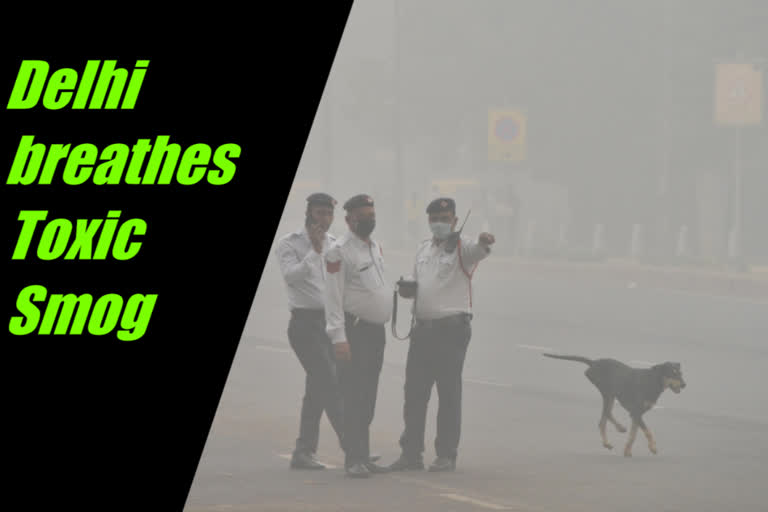New Delhi: The national capital of India is literally struggling to breathe. It has become a common occurrence every year in Delhi after Diwali. This year, the effects of air pollution are more pronounced.
The air quality in the city seemed to be better due to monsoons during August and September. While the smoke from Diwali crackers engulfed entire North India, Delhi suffered from the neighbouring states burning stubble.
Kejriwal government has declared a public health emergency in the event of the dangerous smog engulfing Delhi. Schools were closed till November 5th and construction activities have been banned. Implementing the odd-even scheme shows the gravity of the situation.
Though ministers are saying that the smoke from burning paddy stubble will be less due to incessant rains, the Air Quality Index (AQI) says otherwise.
If the AQI is between 400-500, the situation is considered dangerous. Given the fact that the AQI exceeded 500 in many parts of Delhi, flights had to be cancelled. People are unable to step out without masks in surrounding areas like Gurugram, Noida, Faridabad and Ghaziabad. States like Telangana, Maharashtra, Madhya Pradesh, Chhattisgarh and Odisha also face the brunt of this air pollution.
The National Green Tribunal (NGT) ordered a ban on stubble burning four years ago. Punjab and Haryana governments assured the enforcement of NGT guidelines. The central government allocated Rs.1,100 crores towards its implementation but the situation remained the same.
If one ton of stubble is burnt, 60 kgs of Carbon Monoxide, 1,400 kgs of greenhouse gases, 3 kgs Sulphur Dioxide will be emitted. Haryana, Punjab and Uttar Pradesh together burn about 5 crore tons of stubble every year. Besides emitting toxic gases, thousands of useful bacteria species are dying.
